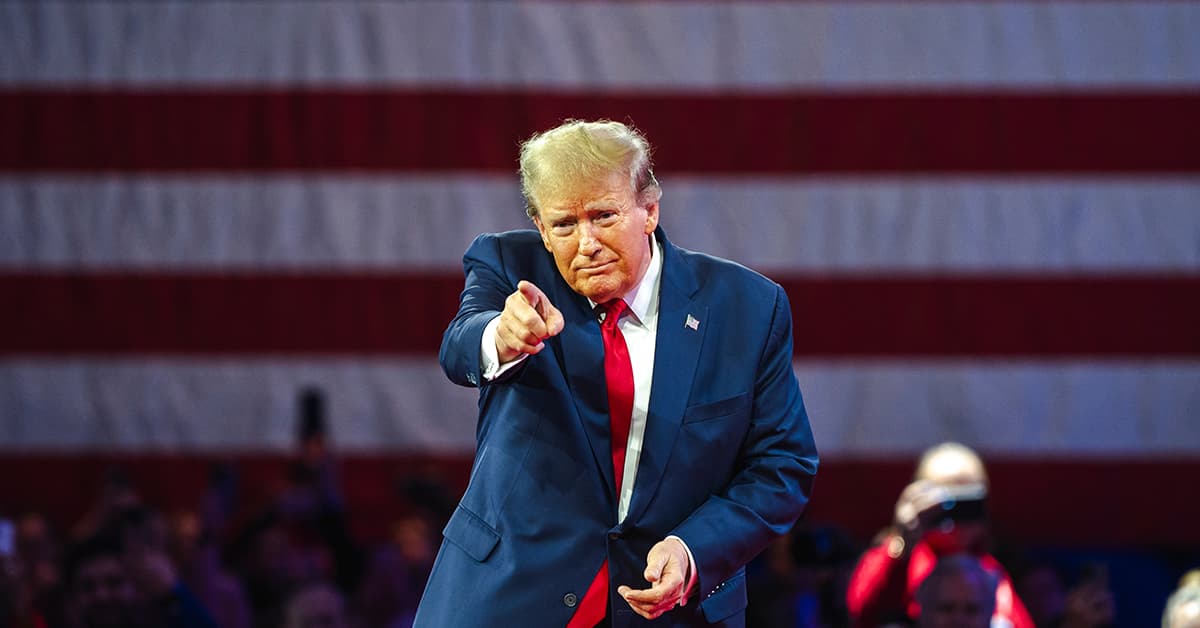
Posted on: 28th March 2025
Trump’s Gold Card – What Now for EB5?
“Seriously, but not literally”
Turn on the business news on CNBC or Bloomberg TV in recent weeks, and the conversation of the anchors and their esteemed industry-heavyweight guests is dominated by one topic to which all others seem tethered: tariffs — or, more specifically, President Trump’s relentless threat of, then sudden removal or scaling back of.
It’s not so much the use of tariffs per se that causes consternation in the financial markets, and thus the financial press. It is the bipolar nature with which they are being executed or threatened at the moment. One minute they’re coming next week, then they’re delayed for one month, then they’re back on but at a reduced level. Financial markets — and the wider economy — hate uncertainty more than anything else, and the flip-flopping messages on tariffs coming from the U.S. administration in the past few weeks have been haphazard in the extreme.
The exasperated hosts of the main financial news channels have been given the impossible task of trying to make sense of the chaos and, more importantly, trying to predict the next moves on the chessboard of the Great Game. Wall Street loves a slogan, and one phrase has been repeatedly wheeled out to rationalize the recent events around President Trump:
“Take him seriously, but not literally.”
The logic is that President Trump is usually sincere about the general direction of his bombastic proclamations, but the actual execution will often fall short of the initial target in scale or effect.
It’s with this frame of reference that we digested the latest shock announcement by the Trump administration: that they intend to scrap the current EB5 immigrant investor visa program in favour of a new ‘Trump Gold Card.’ In typical Trump fashion, the proposal was light on detail, heavy on rhetoric, but nonetheless set in motion a scramble as immigration lawyers and immigrant investors rushed to interpret how this might affect them if they are already part-way through an EB5 application or still considering implementing one.
The U.S. EB5 investor visa has been around in different guises since the 1990s and is, without doubt, one of the most successful residency-by-investment schemes in the world. It has been extremely popular, especially since early 2022 when it was streamlined and renewed until Sept 2027. It requires a one-off investment into the U.S. of between $800k and $1m, which must be seen to create 10 full-time jobs. Investors, in turn, receive a fast-tracked U.S. Green Card and a clear path to full citizenship after five years.
The new Trump ‘Gold Card’ will cost $5m and is targeted to sell 1 million units, according to the President. It is unclear whether this $5m would be an investment or simply a donation. Nonetheless, considering the busiest-ever year for EB5 resulted in only 14,000 applications, it is not entirely clear where Mr. Trump thinks he will find 1 million people eager to hand over a cool $5m for his ‘Gold Card / Green Card’ project.
So, how easy will it be for Trump to get rid of the EB5 program?
The first two months of this administration have seen more Executive Orders signed than any other in history, but EB5 cannot be removed in this way. Immigration lawyers have been quick to highlight that the current EB5 program is enshrined in U.S. law and therefore can only be removed prematurely by enacting new legislation. In order to do this, the Republicans would have to win a vote in both the House of Representatives and the Senate before the bill would end up on President Trump’s desk to sign into law.
That could feasibly happen, but it’s by no means guaranteed, considering the Republicans hold only a slender majority in both chambers. There has already been a number of legal challenges and judicial pushback on some of the other anti-immigrant policies of the Trump administration, so it is reasonable to expect similar if draft legislation is brought forward to repeal EB5 before its Sept 2027 expiry date.
In the most extreme scenario, Trump could ‘suspend’ an immigration program based on national security grounds, as he did during COVID. However, labelling wealthy immigrants who want to throw $800k–$1m each into the U.S. economy as a ‘national security threat’ — like the MS13 or Tren Agua gangs — would be extreme, even for this President.
It is far more likely that the Trump team will go down the conventional route of drafting new legislation and trying to get it passed through Congress in the normal way. If they fail, then they would have to wait until the current program expires in 2027 before bringing their ‘Gold Card’ program into force.
Either way, prospective EB5 investors are now rushing to get their applications submitted on the reasonable assumption that, if there are any official changes implemented to the program, they will be allowed to grandfather their petitions through to completion. This would be in line with the current and historical legislation and would be the logical expectation this time, in order for the administration to avoid a wave of legal challenges from disenfranchised EB5 Regional Centers and investors.
Taking Trump seriously means changes to EB5 are likely coming. But don’t take him too literally — they won’t happen overnight.
Need professional financial advice?
We have 18 offices across the globe and we manage over $2billion for our 20,000+ clients
Latest Posts
- Returning to the UK in 2025: Complete Expat Repatriation Financial Checklist
- Financial Planning for UK Residents: Complete Guide to Building Wealth in 2025
- UK Pension Transfer Guide: What Returning Expats Need to Know in 2025
- How Do H-1B Visa Changes Affect the EB-3 & EB-5 Visas?
- Family financial planning: Balancing today's needs with tomorrow's dreams